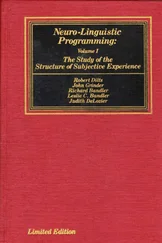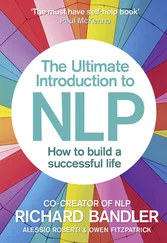Joe: Is the "even as" that you just used, another example of a transition?
Yes.
Joe: OK, then I understand what you're saying. You're saying figure out words that will allow bridging between the different sentences you're making.
Yes. I could say "As you sit in that chair, you can feel the warmth of your hand on your arm and you can feel the notebook on your legs. If you listen, you can even hear your own heart beating and you don't really know … exactly … what you're going to learn in the next three days but you can realize that there are a whole lot of new ideas and experiences and understandings that could be useful."
Now those things don't necessarily connect together logically. The fact that your hand is touching your arm and your notebook is on your leg does not mean that you're going to learn things. However, it sounds meaningful and serves a purpose. The purpose is not one of deception, but one of transition.
A lot of people have the idea that hypnosis is a contest, but to think of hypnosis as a contest is really a waste of time. The question is "How can I structure my communication to make it easiest for someone to accomplish what he wants to?" If somebody comes in wanting to go into a trance to make therapeutic changes, or if I'm using hypnosis for some medical purpose, or control of pain, or to remember things, I want it to be as easy as possible for me to accomplish these things. I want the same thing for the people I communicate with. And as I communicate with people, I use words like "as" to connect ideas together so that they don't have to jump from one idea to another.
Man. Are you saying that you try to link up the suggestion with something in the person's immediate concrete experience to make the suggestion more credible?
Absolutely. You can, in fact, feel your hand on your leg and you can feel your notebook. So I can link something about learning to that. Not only does it become more credible, but it is no longer a jump. I used to think that what made transitional words powerful was only that they made a statement more credible. In addition to that, the fact that people don't have to jump simply makes it much easier for them to actually engage in the process.
When I was working with people doing things like pain control, I used to build upon things that they could verify. "You can feel the pain in your arm, and it hurts you very badly, but you can also feel the beating of your heart, the movement of your toes, and you can feel the sound in your ears as your heart beats. You can feel your glasses on your nose, and it's possible for you to begin to feel that other hand, and that other hand can become very intense in its feelings. You can notice each finger, and in fact, you can take all the feelings in one hand and put them in another."
I used to think that it was the logic of that kind of statement that made it convincing. That so–called logic is part of what makes these statements effective, but more than being logical and convincing, these statements are a set of instructions about what's plausible. That plausibility becomes easier for people to respond to when they stay in a constant, uninterrupted state of consciousness. You see, hypnosis makes it possible for somebody to control his heart rate. But usually when people begin to try to do something like control their heart rate, they start talking to themselves, and then they start thinking about their Aunt Susie, and then they say "I wonder if this will work." Those jumps between ideas represent changes in consciousness—not radical ones but subtle ones.
Building transitions maintains a relationship between statements so that rather than jumping from one state of consciousness to another, you move through them smoothly. And as you move more gracefully from one state of consciousness to another, it's easier to accomplish tasks, especially ones that have to do with your involuntary systems like heart rate and blood pressure. It's not a mechanism of conviction; it's a mechanism that makes it easier.
One of my main criteria for the validity of something is not only whether or not it works, but also how easily it works. I don't believe therapy should be hard on the client or the therapist. When something is hard, it's an indication of what we don't know. Hypnosis should not be difficult or unnatural. It should be the most natural thing in the world. Whenever people have to force themselves and try, that is an indication that the technology you're using is not sophisticated enough. That doesn't make it bad, but it is an indication that there's much more to know. Does that make sense?
Man: I really wasn't following the last sentence.
Thank you, You did that beautifully. What I am saying doesn't really make sense; however, it works. I elicit a very different response if I stop using phrases like "as" or "when" or "while" and suddenly use a disjunctive sentence like "Does that make sense?" You start to go back through what I said, and it's difficult to make the transition to the last sentence because there wasn't one. Now while I'm describing this to you, if you consider your experience of what's occurring right at the moment that I'm talking to you, you're moving from one idea to the other. The grace with which you're moving from one idea to the other is what we're talking about. And if I want to know if you consciously understand that—which is a different thing than experiencing it or being able to do it—I'm going to have to be able to make a smooth transition to your conscious understanding. As you sit here considering that, does that make more sense to you?
Man: It seems that you're talking about using a number of bridges; for example the thing about making your style like the patient's, or adopting maybe the mannerisms—
No, I didn't say mannerisms. You might want to mirror body posture, but if the person scratches himself, it's not necessary for you to scratch yourself. If you adopt a person's mannerisms overtly, it has a tendency to intrude into consciousness, and the one thing you don't want to do as a hypnotist is to intrude into that person's consciousness. You want to find more subtle mechanisms: for example, breathing at the same rate. That's not something a person is apt to become conscious of. But unconsciously he will be aware of it and he'll respond.
Man: OK. Those things are another way of making a link between the ideas that you're trying to put across. I don't know quite how to articulate what I'm thinking: that somehow you're going to be more persuasive if there's a similarity in various subtle means.
Yes, and I do something else that makes it much easier to be successful as a hypnotist. I don't think of it as persuasion. Many people who do hypnosis and write about it talk about it as "persuasion," being "one–up," being in "meta–position," or being "in control." They sometimes refer to themselves as "operators," which I always thought was an interesting thing for hypnotists to call themselves. People who do that also write about "resistance," because thinking of hypnosis as control and getting resistance go hand in hand. One way of describing what I'm suggesting is that it is more persuasive. The other way of describing it is that it is more natural. It's more natural for you to respond to things that fit together than to things that don't.
Try something. Close your eyes for a minute. Most of you here have been standing near a grove of trees at some time in your life. And as you stood there and looked up at those trees, you could see the leaves and the branches, and you could smell the air that surrounded the trees. You could feel the weather, the temperature of the air; you might even begin to hear a breeze, and as you hear that breeze you might notice the branches and the leaves responding with movement. You might turn to your left and see a large rhinoceros charging at you.
Читать дальше











